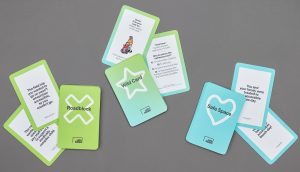In the first of a two-part strategy magazine feature adapted for Media in Canada, writer Jonathan Paul looks at the new ways in which brands are connecting with kids via value targeting.
Thanks to Justin Bieber’s discovery on YouTube and subsequent rise to superstardom, kids all over the world have begun tapping into their inner pop stars, creating YouTube videos of themselves performing cover songs. It’s made some into overnight internet stars, like Maria Aragon in Winnipeg whose cover of Lady Gaga’s ‘Born this Way’ was promoted on Twitter by Gaga herself. At press time the little girl’s video had accumulated over 17 million views.
The trend has not gone unnoticed by Coca-Cola. In March, Coca-Cola Canada, working with UM Canada, launched a program with MuchMusic called ‘Covers.’ It encourages young Canadians to make videos of themselves performing a cover of one of six hit songs and submit them to Covers.muchmusic.com.
‘It’s a project that naturally lends itself to all platforms,’ says Brad Schwartz, former SVP, GM, Much MTV Group (at press time, Schwartz had left to take a position with Fuse, Madison Square Garden’s national music TV network). ‘You’re engaging your audience to do something active, not to just passively sit and watch a 30-second ad, but to participate.’
‘What we’re encouraging teens to do with this program is demonstrate their optimism, their hopes for the future through music,’ Bobby Brittain, VP, sparkling business unit, Coca-Cola Canada, further explains. ‘The oft-quoted example of Justin Bieber is certainly something that inspired this program as a way of creating a really positive future for people, and as a way of connecting with each other and celebrating being a teen.’
These days, a big part of being a teen is the ability (and incessant need) to multi-task. Whether they’re into music, fashion or sports, teens live out their passions across a variety of platforms, often at the same time. Narrowing their efforts against a diverse age range, marketers are learning to multi-task too, targeting teens with campaigns that span those playgrounds, in person, on TV and especially online.
For Coca-Cola Canada, music has become a key way to engage youth where they play. It recently entered into a partnership with Apple’s iTunes, wherein people who buy a 591 ml bottle of Coke receive a free song download.
Brittain says that partnership, along with ‘Covers’ (the largest effort around music the company has engaged in over the last 10 years and the first time Coca-Cola Canada has solicited user-generated content from teens), is a localized interpretation of the global ‘Open Happiness’ effort.
This global platform is seeing the brand become more strategic about the way it’s targeting young people through music. It includes a recently released global ‘Anthem’ commercial, developed by Wieden + Kennedy Amsterdam that will soon make its way to iCoke.ca, featuring young people rocking out to a soundtrack provided by British band One Night Only.
Another initiative on March 22 saw Coca-Cola team up with the band Maroon 5 for a 24-hour recording session in London, which involved fans around the world, who could follow the session as it streamed live on Coca-cola.com/music.
Viewers were able to interact with the band, lending their creative inspiration via a movement-based projection system in the studio that streamed fans’ thoughts, inspiration and comments onto the studio walls to direct the band in the creation of an original song. The session was promoted via Coke’s Facebook page and Twitter, and bloggers from countries around the world were on site to document it. Back in Canada, Brittain says teens can expect more efforts like the ‘Covers’ program coming from Coca-Cola.
‘We are committed to ensuring that we leverage music into the future,’ he says. ‘We’re really excited about the prospects for [‘Covers’] and would love to see how that evolves after this year.’
Mattel is another company that’s recently teamed up with a youth media brand to integrate its products into content to reach a younger demographic. Working with Trojan One, it orchestrated pre-taped segments inserted into broadcasts of MTV Live in November and December in which the cast went head-to-head playing the board game Apples to Apples. It challenges players to come up with off-the-wall noun and adjective combinations. The segments were advertised by a branded promo spot, which aired on MTV.
‘We wanted to target a younger audience than we had targeted in the past for adult games, really a younger social audience,’ says Kathleen O’Hara, brand manager, entertainment and games, Mattel Canada. ‘So, it was something different than just running traditional TV spots, and they really showcased how your personality can make the game more fun.’
O’Hara says that the MTV partnership follows on the heels of another, more old-school, experiential program that took the ‘Games Night’ model to university campuses across Canada during frosh week, where students were encouraged to try out a roster of Mattel’s adult games. Brand teams set up tents and created contests to draw people in, giving games as prizing.
‘We really wanted to introduce our games to an audience that we hadn’t necessarily reached yet,’ says O’Hara. Mattel is looking to adapt its on-campus program next fall, targeting university student residences and further increasing on-campus engagement with promotions in campus newspapers and on campus radio stations.
Tune in tomorrow, March 29, for part two






















